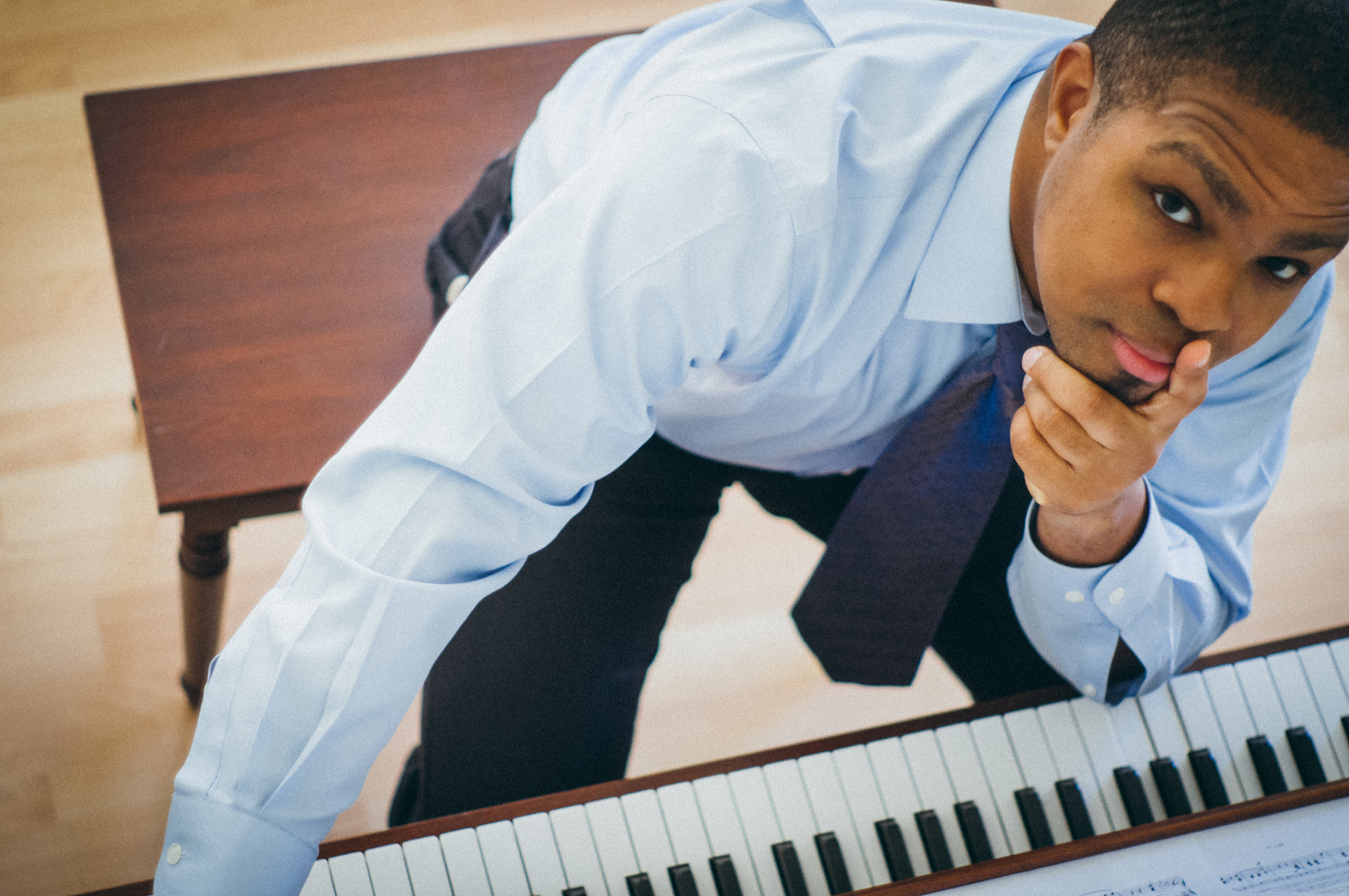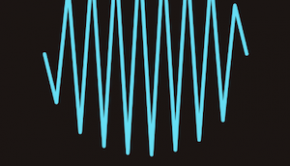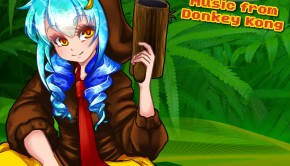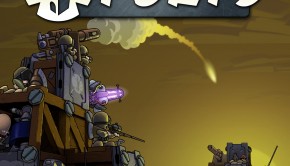Chase Bethea Interview: Roots in the Game Boy Classics
Chase Bethea is the latest breakthrough indie composer to feature on VGMO. His most famous game soundtrack, Deity Quest, is his tribute to the classic Game Boy scores for the Final Fantasy and Pokémon series. He has since gone on to test his versatility with the horror-themed I Can’t Escape: Darkness, the far more settling Super Happy Fun Block, and the hybridised Cubic Climber.
In this interview, Bethea discusses each of the inspirations and production approaches behind each of these works, accompanied by previews of their album releases. Along the way, he talks about his game music roots and his ambitions for the future. Look out for a giveaway of one of his soundtracks on the site tomorrow.
Interview Credits
Interview Subject: Chase Bethea
Interviewer: Chris Greening
Editor: Chris Greening
Coordination: Chris Greening
Interview Content
Chris: Many thanks for talking to us today, Chase Bethea. First of all, can you tell us about your musical background? What led you on the path to becoming a video game composer?
Chase Bethea: Hi Chris, Thank you for having me. I greatly appreciate it. So, my musical background starts as an early child listening to a lot of Smooth Jazz, Latin jazz and R&B. I started playing Saxophone in 5th grade up until 7th grade. I had a long break until I started classical piano lessons in 2008. I was always influenced by music on my Game Boy such as Final Fantasy Legend II, Bugs Bunny Crazy Castle 2, Turok: Battle of the Binosuars and Batman Forever. I would access the sound tests and just listen to the game music on loop for hours and this continued as I played more games.
It wasn’t until I started working at an Internet media company and was tasked to do composition that I started considering composing my own scores. Then, I researched how to become a video game composer and sound designer. From there, I went back to school, bought a book and started looking for jobs while still in school. I landed my first freelance gig in 2011 and having been working in the industry since then.
Chris: In the last few years, you have worked on multiple indie games. Can you tell us about how you have developed this niche? How have you established and cultivated links with indie developers?
Chase Bethea: When I first decided that I wanted to work in this industry, I thought I could work really hard so I could get the opportunity to work on the next AAA game or work in a AAA game studio. After doing some more research and watching all the crazy things that happen in AAA, I started to think that maybe the grass isn’t greener on the other side. I met a gentleman who used to work in film, at my old job Lenscrafters, and he told me that I would have more control over my work if I did freelance. Since layoffs happen so often, I knew that it would be quite difficult to keep a AAA job not to mention control my assets.
So, after working with my first independent developer and liking it, I started to become more confident with working with the smaller independent teams and culture. Luckily, the independent teams liked me and my work. So, I saved my money and started going to gaming expos such as PAX, GDC and other conventions to meet and make friends. Our friendships grew by having lunch or hanging out at each other’s house playing games we both enjoy, and with that so did our collaboration on projects.
Chris: Your best-selling soundtrack to date is for Deity Quest. How did you capture the world and story of this title with your music? How did you pay tribute to classic RPGs from your childhood in the process?
Chase Bethea: Before I wrote a single note for Deity Quest, I spoke with the developer, Fancy Fish Games, about the inspiration behind the game. The inspiration was Pokemon and Final Fantasy. This was perfect because I love both of those franchises and I played a lot of the games growing up, specifically, Final Fantasy Legend II, VII, X and Pokemon Red, Blue, Yellow, Gold & Silver.
So, I gathered up all of those games I owned as well as their respective soundtracks and listened and played them whenever I was away from home. My thought process was to get the sound in my mind and ears again so that I could merge the two because that was going to be the world of Aberos in Deity Quest. Once I was ready, I wrote a theme, which is the menu music for Deity Quest titled “Divinity” and I reworked that theme backwards and forwards, up and down for the entire soundtrack. My tribute was paid to the classic RPGs by utilizing the technique of having the theme heard first in the menu and doing variations of that throughout the game so that gamers will recognize what it is attached to. I remember Nobou Uematsu, Kenji Ito and Junichi Masuda doing this a lot when I played the games they wrote music to.
In Deity Quest, the only time the theme is not prominent is when it comes to the Gods. Each God has their own unique theme and I felt that was extremely important because, in Pokemon or Final Fantasy, each party character, gym leader, or protagonist/antagonist have their own theme. This is how someone would identify and possibly connect with who they have encountered in the game. I read all of the dialogue sections for each chapter and referred to the art of the game multiple times to create the musical themes and sound world areas for Deity Quest. My other tribute was my instrumentation and arrangements. I used 8-bit / 16-bit instruments and merged them with some more modern instruments and arranged the music in the style that my role-models did.
Chris: You’ve also produced short but sweet soundtracks to Adventure Lib, Super Happy Fun Block, and Cubic Climber. Could you tell us about each of these scores and what they reflect from you?
Chase Bethea: Thank you very much! For Adventure Lib the score is written for a game that goes beyond ridiculous with classic mad libs. My job was to write music that gave the sense of a journey for the different areas in the game.
For Super Happy Fun Block the score is written around the worlds for the character named, Ball, along with some encounters he has along his quest. Since I specifically wrote for the worlds and the theme music, I felt that a theme was needed to present the feeling of a puzzle adventure. With that in mind, the music needed to be relaxing and not distracting. I did not want the player to turn off the music but forget it was there in a good way. I like to call it “cognitive puzzle music”. I approached the score from the perspective of just being the player. I asked myself, “What I would enjoy to hear and not want to hear?” All of these things reflect how I wanted the timbre of Super Happy Fun Block to be.
For Cubic Climber I purposely did not write a main theme for the game because this was also level based. Instead, I made my sound palette and instruments be the theme for the game. Ratchet clicks, big drums, vibrant strings with undertone synths are in almost every track for the effect of cohesion. Since the game is about rock climbing it needed to carry energy and confidence and that is how I achieved the score. People have told me that the music grows on them after the second listen and then by the third listen they hear almost everything and understand the sound. Cubic Climber is a hybrid sound that I actually enjoy and would like to refine as much as I can. I love taking small elements from different genres of music and putting them altogether to make something abstract yet enjoyable. It keeps the ears fresh and the creativity alive.
Chris: The production values of the soundtracks are also generally impressive. Can you tell us how you have achieve this? What hardware and software do you use to bring your music to life? Do you also work with performers?
Chase Bethea: Thank you very much! One of the biggest things I make sure to have is good production. It is very important to me. Normally, when I compose, I try to write first and mix after. By doing this, I allow all my creative juices to flow without being worried about the mixing process in the interim. If something sounds off or is too loud, I may do some very small adjustments so that some things balance out. After the composition is complete, I start with fresh ears and begin mixing. I EQ when needed and do some light compression on drums and the overall track. After a few mix renders, I pick a different day to listen back, take notes and make some final tweaks to the mix I feel works best.
Once I choose the best mix, I begin the mastering process. This is where the magic happens. Whether I am mastering the music or the mastering studio is doing it, I make sure that final product is close to perfection. Some of mixing tools I use are Wave Arts Compressor and EQ, Color Tone Pro and sometimes Ozone Exciter.
Chris: Your discography also includes the soundtracks to the horror games I Can’t Escape and I Can’t Escape: Darkness. How did you rise to the challenge of creating a horror score?
Chase Bethea: Research was my best friend in helping me lock down the score for I Can’t Escape: Darkness. I played some old games like Tomb Raider, Thief, and Silent Hill 2 for some inspiration. With those resources I was able to gather an abundance of ideas and create the score. One new technique I tried was layering. I wanted the descending levels in the game to correlate to how I wrote and arranged the music. So, when you are playing in the game, different track stems would fade in from one complete track depending on what floor you are on. I felt this would be more effective to draw the player into the game.
Chris: You put special effort into ensuring the soundtrack I Can’t Escape: Darkness was more immersive than its predecessor. How did you achieve this? Could you tell us more about the special techniques, for example voice manipulation and binaural mixing, you used to do this?
Chase Bethea: When I started working on I Can’t Escape: Darkness I wanted make the music and sound design more immersive than the first one. I had more time to sink my teeth in to the project which helped with being more experimental. Besides the research of studying what makes people uncomfortable and fear systems, I also created custom Kontakt instruments for the soundscape. I manipulated everything I could think of to make things sound weird and disturbing. I recorded goats, snapping fingers, the technique of singing metal music, some bowed cymbals and layered it altogether. Those were just some of the instruments I made.
For the voice manipulation, I set up an audio track and put a compressor, flanger and Ozone Trash 2 directly on the channel. Then, I recorded my voice saying things such as “hello, woah and you will not escape my maze”, as well as maniacal laughs. “Right of Passage 2nd Floor – Liminality” exhibits this.
For the binaural mixing, I was only able to use one of the head microphones to record some sounds and implement it in the score. The rest of it was mixed at a studio with a 5.1 setup. While mixing at the studio I used two plugins called Wave Arts Panorama and 3D Panner Motion Effects to accomplish the immersion that I wanted.
Chris: You’ve shared your music through Bandcamp, Loudr, Sumthing Else, iTunes, and Google Play. Why is sharing your music in soundtrack form important to you and what advantages do multiple scores confer? Do you always have the stand-alone soundtrack in mind while creating in-game music?
Chase Bethea: Sharing my music in soundtrack form is important to me because it allows people to have the music available to them outside the game. Growing up, I wanted game music to be on cassette or CD and I could not have that until early 2000s. So, instead I would put on the sound test and listen to the music, setup the PlayStation in CD mode and played the music through the game or sometimes leave a game level running for hours just to listen to the music.
Making the music accessible to people on multiple stores allows them to have it whenever they get the itch to hear it, if they liked it while they were playing the game. Nowadays not everyone has or uses the same device to buy and listen to music on. Not everyone uses the same digital store either. So, to cover all of my bases, I like to have all my music on every popular store and stream service if possible.
Yes, I always have a stand-alone soundtrack when I create in-game music. My hope is that someone is thinking like me when I was young playing a game with a great score and says “Hey, I’m really enjoying this music. I wonder if there is a CD for it to enjoy while I’m away from the game. Woah, there is! I have to get it!”
Chris: As a relative newcomer to the field, you’ve got a big career ahead. What are your ambitions for the future? Do you wish to continue exploring the indie sector or would you be interested in exploring other areas, e.g. AAA games, films, or original albums?
Chase Bethea: My ambitions for the future is to continue working in game audio as much as possible and creating ear candy for the projects I am blessed to be a part of. I want to expand my music through more listening streams. I want to design and develop some audio hardware. I want to educate people on self-worth and teach others how to value professionals in terms of services. I want to work on great game artistic projects with nice, talented and brilliant people. Whether that is with a small Independent, AA Independent or AAA games it doesn’t matter. Right now the Independent scene seems to be a match for me.
I wouldn’t mind exploring voice-over acting, voice-over directing or editing voice-over demos more. I would be interested in scoring some video game franchises in the future as well as in doing some video game remix albums of games that are not as popular.
Chris: Many thanks for your time today, Chase. Is there anything else you’d like to say about yourself or your works? Do you have any messages for your fans around the world?
Chase Bethea: Thank you so much for having me. I had a great time answering some fantastic questions. People can look forward to another game soundtrack release soon (possibly this month). No guarantees yet but keep on the lookout. Also, a new mobile project called Not a Clone might be at MAGFest Indie Video Game Showcase in 2016. If it is, go and check it out. I worked on most of the sound effects for that game. I’m currently working on five to six projects. I will be doing periodic updates of news related to that on Twitter and my Facebook Fan Page. To my fans, Thank you!!!!! Please say hello if you see me or drop me an email. Honestly, you are a big part of the journey I am on and we are in it together. Thanks again!
Posted on January 28, 2016 by Chris Greening. Last modified on January 28, 2016.















